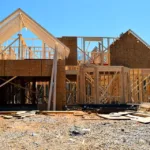[ad_1]
In the past few articles, some of the criteria and analysis that go into the determination of the viability of a commercial mortgage loan have been discussed. We have looked at how we get to a building’s net operating income or NOI. This is key, because it tells us how much, after expenses, the building earns. And remember, in a commercial loan the key is what the building earns. This is why to side by side buildings with the same number of stores and apartments above can be worth two different amounts. Different levels of NOI! We have looked at capitalization rate, or the return that a buyer of a commercial property wants on their investment. We showed how this number, along with NOI, can give us an idea of what a building is worth.
Debt Service Coverage Ratio or DSCR
We are now going to look at the most important number, the number which will go a long way in determining whether or not a commercial mortgage loan can get funded. It is a number that can get a loan amount cut, or even potentially increased. This number is the debt service coverage ratio, or DSCR. Remember what we said early on in Article 1. Commercial mortgage loans are not about LTV, but they are about the DSCR.
DSCR is not a complicated formula, but it will tell us if the debt service (principal + interest) of a given loan amount at a given interest rate will be adequately covered by the NOI that the building produces. Again? Will the annual NOI divided by the annual debt service coverage of the desired loan result in a DSCR high enough to satisfy the lender. Typically, the minimum DSCR level will be 1.20X or 1.25X depending on the property type.
Remember that the mortgage rate cannot be higher than the cap rate, or the building will not debt service. Another way to look at it: You can’t borrow money at Bank 1 at 7% and turn around and invest it at Bank 2 at 6%. This is not a winning proposition, and in commercial mortgage terms will not get you the DSCR that you need.
Now let’s take a look at an example. Remember that the calculations are not complicated, but the results are critical to the success or failure of loan funding:
NOI = $80,000 Annual Mortgage Expense = $65,000
DSCR = $80,000/$65,000 = 1.23X which is OK for certain property types
What if the NOI goes down, or the mortgage expense goes up?
NOI = $75,000 Annual Mortgage Expense = $68,000
$75,000/$68,000 = 1.1X DSCR which is not a good number.
A way around this is a lower loan amount which will result in a lower mortgage expense. This will require a larger down payment for a purchase, or lower proceeds in the event of a refi.
In any event, the bottom line still remains that:
The Income Producing Property Must Be Able To Support Itself!
[ad_2]
Source
[To know more]


